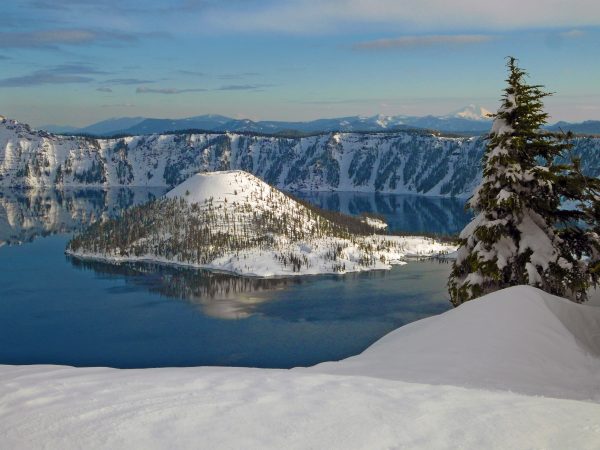A Boy with a Dream
Crater Lake is on my bucket list. In 1870 it was on young William Gladstone Steel’s bucket list, too.

At some time in the past, a volcano erupted in the Cascade Mountains in southern Oregon and left behind a crater. Since that time, God has sent rain and snow into the crater, creating a beautiful sapphire-blue lake. Few places on earth are as clean as Crater Lake.
My dream is to see Crater Lake in the wintertime because the winter pictures I have seen are so beautiful. I don’t know how practical my dream is since the average annual snowfall there is 528 inches. It is possible to see snow there in any month of the year, but I still hope to see it in the wintertime someday.

Two areas of the bottom of the lake receive water from hydrothermal springs, but of the five trillion gallons of water in the lake, most of it comes from rain and snow. It takes a lot of water to fill the deepest lake in the United States. At over one-third of a mile deep at its deepest point, it is the ninth deepest lake in the world.
The reason behind its beautiful sapphire-blue color is that the rocks surrounding the lake and beneath it are hard volcanic rocks. Most lakes get cloudy and dirty from runoff, but these rocks are so hard that they don’t dissolve much.
The volcano is recent enough that the native Klamath nation has legends about when it happened. Archaeologists have even found sandals and other objects under the ash and pumice nearby. Native people treasure Crater Lake. The first known Europeans to see it were three gold prospectors that were in the area in 1853. Another group of prospectors saw it nine years later. One of them wrote an article for the Oregon Sentinel newspaper. In 1869 James Sutton, the editor of the Oregon Sentinel, went to the lake with some others. They brought along a canvas boat they had made and rowed out to Wizard Island, the island you can see in the pictures. It has a crater on top, too. Sutton called it Crater Lake.
At a school in Kansas in 1870, young William Gladstone Steel unwrapped the newspaper that held his lunch. He read from the newspaper while he ate. The newspaper contained a story about an unusual lake in Oregon. William was fascinated. He decided then that he would see that lake someday. He and his family moved to Portland, Oregon, two years later, but it wasn’t until 1885 (15 years after he had first read about it) that William made his way to Crater Lake.
When William Steel saw its beauty, he decided that it should be preserved as a park. For 17 years, he worked to make Crater Lake a national park. It became part of the Cascade Range Forest Reserve in 1893, but Steel was not satisfied. In 1902 he finally succeeded. That year President Theodore Roosevelt signed legislation establishing Crater Lake National Park.
Pay close attention to those childhood dreams you hear around your house. William Steel’s dream has blessed millions of people for more than a century.
Think about how God fills Crater Lake one raindrop and snowflake at a time while you are filling those little buckets who call you mama one drop at a time.
Sing to the Lord with thanksgiving;
Sing praises to our God on the lyre,
Who covers the heavens with clouds,
Who provides rain for the earth,
Who makes grass to grow on the mountains.
Psalm 147:7-8


I read your daily encouragement emails every morning. They have been such an encouragement to me during these times of uncertainty. I have been battling anxiety for these last few months, and I am so thankful for your uplifting words that remind me of who God is. They have been just what I needed to hear each day. I really relate to what you have to say. I look forward to opening you email every morning! Thank you so much for the time you put into sending it out! May the Lord bless you and your family!